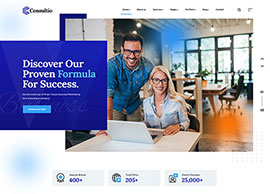FAQ’S
Penetration of a grease is the relative thickness of a grease.
2. How much grease should be put in a bearing?
It is recommended to only fill 33% of the free space of an antifriction bearing. As an exception, for low speed and highly dust prone application, one may fill up to 100% free space in the bearing.
Please note that - overfilling of the bearing leads to more failure of the bearings as compared to under-fillings of the bearings.
3.How can I determine the service temperature range of a grease?
The upper service temperature is determined by ascertaining the evaporation loss and the thermal stability of the base oil, dropping point of the grease and the maximum serviceable temperature of the additives incorporated. The lower service temperature is ascertained by testing the low-temperature torque of the grease and the pour point of the base fluid. The temperature range indicated in the product bulletin is only meant to be an indicator for the actual use. The real temperature range should be determined by considering other factors like operating condition, atmosphere and type of application.
4. The colour of the grease has changed within a short period after putting it in the application. Should I throw away the grease as the quality does not seem to be okay?
NO. There are few additives incorporated in few types of grease that change the colour due to the change in the surface chemistry immediately (or within a short duration) on coming in contact with rotating surfaces (dynamic load condition). This change in colour is within the known behaviour of the grease and does not affect the performance of the grease adversely (or in any other manner). You may continue to use the grease till its intended life.
5. Is it common to observe oil separation in Greases?
“Bleeding” or Oil separation is a naturally occurring phenomenon and should not be construed as a problem. The storage temperature in excess of 45 degree C accelerates oil separation. The excess oil can be safely stirred back into the grease within the container. It has also been observed that the higher penetration greases (Lower consistency) tend to have more oil bleeding as compared to thicker greases.
6. The colour of grease has become darker as compared to when I first opened the container. Should I throw away the grease?
No. It is perfectly alright to use the grease.
7. The viscosity of the base oil available from your end is reported at 40ºC and 100ºC. How do we know the base oil viscosity of the grease at our application operating temperature?
The viscosity at various temperatures can be calculated using the ASTM Standard Viscosity - Temperature Chart. One may use various utilities available on the Public Domain of World Wide Web to calculate the viscosity at a particular temperature provided you know either the viscosity at a particular temperature and viscosity index or viscosity at another temperature.
1. What is viscosity of Oil?
Viscosity of an oil is a relative thickness that determines the flowability of the oil.
2.What is a flash point of an Oil?
Flashpoint of an Oil is the temperature at which 5% of the oil starts generating enough vapours to ignite the oil in the presence of an external source.
3. The colour of the oil has changed within short duration of putting it in application. Should I throw away the oil as the quality does not seem to be ok?
NO. There are few additives incorporated in few types of oils (more common in case of gear oils) that change the colour due to change in the surface chemistry immediately (or within short duration) on coming in contact with rotating surfaces (dynamic load condition). This change is colour is within the known behaviour of the oil and does not affect the performance of the oil adversely (or in any other manner). You may continue to use the oil till its intended life.
4. What is the best place to draw sample of oil for further testing and analysis?
The best place to draw a sample of oil is from the downstream of any application. Ideally one should draw as many samples as possible so as to get the most accurate analysis done. E.g. For large lubricating or gear oil systems, draw the sample from the oil in circulation and from the bottom of the sump/ reservoir. In hydraulic systems, draw a sample from the header tank, downstream of filters etc.
5. How are base oils classified?
Base Oils are classified as Mineral , Synthetic & Vegetable oil.
Mineral Oil: Derived from crude oil.
Synthetic Oil: Man made through synthesizing process.
Vegetable oil: Derived from plants.
6. Which are the most important base oil properties ?
Viscosity, Viscosity Index, Flash Point, Pour Point, Volatility, Oxidation and Thermal stability, Aniline Point (a measure of base oil solvency toward other materials including additives), and Hydrolytic Stability (the lubricants resistance to chemical decomposition in the presence of water).
7. In how many groups American Petroleum Institute (API) had categorized all base oils ?
The American Petroleum Institute (API) has categorized base oils into five categories (Group I to Group V )
8. How mineral oils are assigned in these groups ?
Groups I, II and III are all mineral oils with an increasing severity of the refining process.
Group I base oils are created using the solvent-extraction or solvent-refining technology.
Group II base oils are produced using hydrogenation or hydrotreating.
Group III base oils are made by hydrogenation process coupled with high temperatures and high pressures.
9. How synthetic oils are assigned in these groups ?
Group IV is dedicated to a single type of synthetic oil called polyalphaolefin (PAO).
Group V is assigned to all other base oils, particularly synthetics. Some of the most common oils in this group include diesters, polyolesters, polyalkylene glycols, phosphate esters and silicones.
10. Why choosing oil is more important ?
Whenever you will buy a grease or oil, there will be some expectations in mind such as its service life, higher operating temperatures etc. For meeting these conditions choosing a proper oil as a base component is very useful.
11. Even though synthetic oils have many advantages, why mineral oils are popular ?
While synthetic oil are ideal for applications like engine oils, gear oils, bearing oils and other applications, mineral oil remains the predominant oil of choice due to its lower cost and reasonable service capabilities.
12. Which base oil group constitutes major share of the lubrication industry ?
Group I base oils contribute to approx. 28 % of the lubricants used.
Group II base oils holds 47 % of the lubricants used.
Group III accounts for less than 1 % of the lubricants used.
13. What are additives ? And its types?
Oil additives are chemical compounds that improve the lubricant performance of base oil.
Anti-oxidants, Anti foam agents, Antiwear, Extreme pressure, Demulsibility, VI improvers, Corrosion inhibiters are various additives added to oil as per application.
Additives
Additives are active chemical ingredients which are added to lubricants to achieve or improve special features of lubricating oils/greases to minimize negative properties.
Ageing
Chemical modification of substances respectively by influences such as aerial oxygen, temperature, light and by Catalytic effect of metal or other contaminants.
ASTM
American Society for testing and materials. (American institution for standardisation)
Base Oils
Main component of oil contains lubricants, in most cases mineral oil, but may also include Polyalphaolefin, esters, glycol etc. Viscosity-Temperature behaviour, low and high temperature properties, additive solubility and response are determined by the selection of base oil respectively.
Consistency
The consistency of the grease or paste is determined by the method of cone penetration according to ISO 2137.
Dropping Point
Temperature, at which a grease thickener starts melts or degrades. The temperature measured at this moment is called dropping point.
Extreme Pressure Lubricants
Lubricating oils /greases are having extreme pressure additives to increase the load carrying capacity in the boundary and mixed friction range. These additives react with metal surfaces under the pressure and temperature conditions.
Gear Greases
Stringy, soft to semi fluid greases (NLGI 0, 00, 000 and 1), thickener in most metal soaps for gear and gear motors.
Molybdenum disulphide
Inorganic solid lubricant with layer structure, which is used in lubricating greases, oils, pastes and coating to increase the load carrying capacity and to reduce friction and wear, especially at high mechanical loads.
NLGI
Founded in the USA in 1933, association of lubricant producers and consumers. Target is the communication of tribological knowledge.
Oil Separation
Properties of lubricating greases to separate certain amounts of oil during storage, at increased temperature and pressure. When low amounts of oil are separated, the grease properties will not be influenced.
Synthetic Lubricants
Lubricants, which are not based on mineral oil or native oils (native ester), but are based on chemically modified base oils.
Thickener
Additive to generate and adjust the consistency of greases and pastes. Lubricating greases consist of a base oil, a thickener and possibly additives. In most cases metal soaps, e.g aluminium, calcium, lithium or sodium soaps are used as Thickeners.
Unworked Penetration
Penetration at 250C of a grease sample which has been filled into the measuring cup under lowest possible shear stress, ie, without previous treatment in the grease worker.
Viscosity Index
Dimensionless index to describe the viscosity-temperature-behaviour of liquid lubricants and base oils. A high viscosity index means a low change in viscosity with changing temperatures, whereby a low viscosity index means a larger change in viscosity with changing temperature.









































